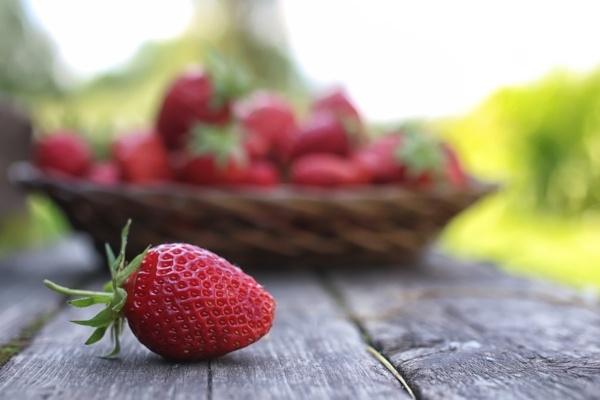Here on the Core, we frequently discuss why fresh produce brands need marketing, and this belief informs the work we do each day as fresh produce marketers. Given the many intricacies of this industry—and the fact that agriculture has a direct impact on every individual on this earth—there’s a perception that it will take several years for fresh produce newbies to really understand the complexities and magnitude of what it is we do. As a young professional who is fairly new to the industry, I can personally attest to that fact. While I have learned an incredible amount since beginning my journey in fresh produce marketing two years ago, I had quite the watershed moment at a recent food industry event that really brought home the importance of this industry moving from a commodity mindset to one that values the power of marketing to transform commodities and trade names into brands.
The “Future of Food” Podcast and the Farm-to-Table Concept
Full disclosure: Kerry Diamond, editor-in-chief of Cherry Bombe (a woman-led magazine and podcast that highlights women in the food industry) is one of my heroes. When I heard that her podcast “Future of Food” tour was coming to Austin, a city relatively near me (meaning approximately a four-hour drive), I knew I had to go. And I was right: it was an incredible experience to be in the same room as many of my food industry icons (Kerry Diamond; Kristen Kish, acclaimed executive chef of Arlo Grey; and Kelly Landrieu, Whole Foods Coordinator of Local Brands, to name a few) and to hear their perspectives on the future of our food system. The event provided valuable wisdom from veterans of the food movement, which prompted several important realizations.
While each answer was unique given each panelist’s personal area of expertise, there seemed to be three common elements threaded throughout the talk: 1. the farm-to-table concept, 2. transparency, and 3. sustainability. As many of you are well aware, there is a huge disconnect between consumers (including people in the food movement—even chefs and food editors!) and the reality and practicality of what farm-to-table really means in practice. Specifically, there is a prevailing belief that healthy, sustainable, transparently-sourced produce can only be obtained from hyper-local and small-scale farms.
Farm to Table
In the traditional definition of “farm to table,” the common perception is that the middle-man (read: retailer) is removed, allowing consumers to instead buy produce directly from the farm, typically one within very close proximity. However, it is worth pointing out that all fresh produce comes from a farm before it hits the table. Why, then, do so many people have this idea that cutting out the retail portion of the supply chain automatically makes produce “better” or fresher? This misconception can be traced in part to the fact that in today’s marketplace, consumers want to have as much knowledge as possible, and they believe in purchasing from companies that display a care for consumers and their values. This is part of why allowing fresh produce to remain an industry of commodity-driven businesses would be doing such a disservice to consumers (hence the importance of a brand story).
Transparency
As professionals in the fresh produce industry, we have the privilege of interacting with the people behind the scenes of many of the companies that provide the produce we see on the grocery store shelves. We know that they often are part of family-run businesses with deep histories of caring for the land and products, as well as the people who eat the food they produce. Many of these individuals have a genuine passion for providing the best-tasting, highest-quality products in part because their own families eat the food grown on their farms.
Sustainability
These are companies that care for the land, and they employ sustainable growing practices not for “show,” but because they respect the environment that has brought forth so much good—and because it is truly part of their family and company legacy. While consumers may not be able to physically visit the farms their store-bought produce comes from, many of these growers have implemented traceability programs that encourage shoppers to “follow us to the farm.” For countless companies like this, their teams care not only about their local communities, but also about the health of our nation as a whole, manifesting the great passion and power of this industry into initiatives like Tour de Fresh.
What does all of this mean for the fresh produce industry? Quite frankly, it provides even more evidence that we need retailers to commit to highlighting brand stories that will help educate consumers about the fact that the food in the grocery store is grown by real people who work the land with care. Now, narrowing our scope a bit, what does all of this mean for fresh produce marketers specifically? To us, the main takeaway here is this: our work matters. With 90% of Americans not consuming enough fruits and vegetable, our nation is in dire need of increased consumption of fresh foods, and consumers need to know that commercially grown products are a sustainable, cost-effective way to (healthily) feed a hungry nation. That, fellow fresh produce marketers, is where we come in.
Have thoughts on the farm-to-table topic you’d like to share? Comment below or tweet us at @TheCoreBlog!
{{cta(‘1ae4ca72-b91f-4c73-b8ba-b135cc1eee37′,’justifycenter’)}}












